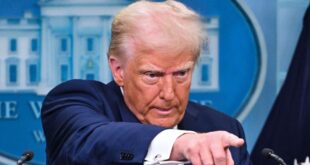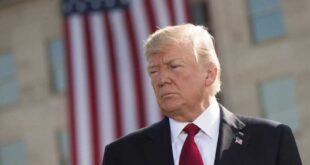On March 1, Iran held two sets of elections, or more aptly, selections. While much attention was paid to the country’s 290-person parliamentary races, the less covered but more important contest was for the eighty-eight-personAssembly of Experts. Tasked with picking the successor to Iran’s octogenarian Supreme Leader Ali Khamenei, the newly formed assembly is dominated by Khamenei loyalists, enabling him to shape the Islamic Republic long after his passing.
Officially, the regime put the participation rate in both contests at nearly forty-one percent, or an estimated 25 million voters. Despite this number representing a historic low, there is a significant reason to treat even this figure skeptically. Leading up to the election, numerous polls gauging interest in participation hovered around thirty percent nationally. In Tehran, one report put that figure between six to nine percent.
This should be no surprise. Iranians are increasingly eschewing the highly choreographed and non-representative contests by the Islamic Republic. Iranians have taken to the streets, driven by a combination of anger against Tehran’s theocrats and apathy towards prospects for change through the ballot box. This was seen amid nationwide protests from 2022–2023, which touched over 150 different cities, towns, and villages at their zenith.
Trendlines indicate that as protests against the regime grew over the past half-decade, electoral participation tanked. To that end, when the Islamic Republic last held elections, whether for parliament in 2020 or president in 2021, official participation rates were roughly 43 percent and 49 percent, respectively. Both contests followed numerous rounds of demonstrations that started in December 2017 and continued into spring 2020. By contrast, in 2016, the official participation rate in parliamentary elections was almost 62 percent.
While Iranian officials seek and encourage high electoral turnout to signal legitimacy, deflect foreign pressure, and even bolster deterrence, the Assembly of Experts election was between an increasingly small and hardline pool of elites. Rather than pander to a national electorate, this contest focused on garnering the support of Iran’s most crucial voter, Ali Khamenei.
Ali Khamenei is now the Middle East’s longest-serving contemporary autocrat. An unlikely candidate for Supreme Leader, he technically did not possess the religious credentials to become one when the Ayatollah Khomeini died in 1989. Khamenei’s ability to balance and bandwagon across Iran’s fractious factions while, in the aggregate, taking every opportunity to contract the already limited political space in Iran has resulted in a less representative but more cohesive and hardline Islamic Republic. The elite produced by and endorsed by this system share Khamenei’s vision of the Islamic Republic 2.0 but with little to no power base of their own.
This was made plain in the latest Assembly of Experts election. Only 144 candidates were permitted to run by the Guardian Council for eighty-eight seats, resulting in less than two candidates per seat. Forty-seven incumbents of the current assembly successfully reclaimed their seats. Others died of old age (or COVID-19), failed to win enough votes, or were disqualified. One was evenkilled.
Candidates for public office in Iran must be confirmed by another Orwellian-sounding institution named the Guardian Council, which features twelve persons directly or indirectly appointed by the Supreme Leader. In an electoral milieu that contained zero reformists and a sprinkling of inaptly termed “pragmatists,” it should be no surprise then that a clerical group known as the Society of Seminary Teachers of Qom, a hardline faction loyal to the Supreme Leader, emerged as victorious.
Those disqualified from serving in the assembly to pick the next Supreme Leader included former President Hassan Rouhani (2013–2021). Late last year, Rouhani publicly hinted at the influence the next assembly would wield, given Khamenei’s age. Considered by some in the West as a potential successor to Khamenei, Rouhani’s disqualification signals the end of Tehran’s willingness to flirt with technocrats.
Among those who failed to keep a seat on the Council is Sadegh Larijani, the former Chief Justice now leader of the Expediency Discernment Council. Once deemed a frontrunner to replace Khamenei, Larijani now faces severe legal and political scrutiny. His key aides in the judiciary have been arrested and sentenced to prison on corruption charges in a campaign initiated by his rival and successor at the judiciary, Ebrahim Raisi.
His defeat signals more than just a personal humiliation, but also likely the end of his slim prospects of remaining in contention for Iran’s top job. The Larijani clan, which once simultaneously held sway over two of the three main branches of government and were likened to the “Kennedys of Iran,” have now been politically sidelined. In 2021, Sadegh’s brother Ali, then Speaker of the Parliament, was disqualified from running for the presidency.
Although analysis and commentary about who will succeed Khamenei are, at best, conjecture, two prospective candidates are worth considering closely. One is Khamenei’s son, Seyyed Mojtaba Khamenei, and the other is Iran’s current president, Seyyed Ebrahim Raisi. Both have been subject to U.S. sanctions since 2019 and don black turbans—a symbol of their ancestry traced back to the Prophet Muhammad. Similarly, both have been socially promoted to “Ayatollah,” as had happened to the elder Khamenei.
On paper, Raisi has the best odds. He was already a member of the Assembly of Experts and was re-elected to it, has overseen the Iranian judiciary, sat at the helm of the Astan Quds Razavi “charity,” which manages the Imam Reza shrine in Mashhad, and has been serving as president since 2021. Despite Khamenei becoming Supreme Leader in 1989 after his tenure as president, the presidency has since been more a stepping stone into political obscurity than anything else.
Mojtaba Khamenei, the other widely discussed contender, is not an assembly member and has never occupied an official government post. Yet, many reports have highlighted his growing involvement in government affairs over the past two decades, including managing his father’s office or “bayt.” The fact that some regime sources have had to deny that Mojtaba may be a Supreme Leader in waiting adds credence to the theory.
While the word “bayt” is meant to transcend its literal definition in Persian via Arabic for house or office, it also reflects a tradition employed by prominent Shia clerics whose sons assisted their fathers in administrative affairs—like a chief of staff—and could eventually gain control of the office after their father’s passing.
However, the U.S. Treasury Department also seems to encompass how Mojtabarepresents “the Supreme Leader in an official capacity despite never being elected or appointed to a government position aside from work in the office of his father.” Per the Treasury, “The Supreme Leader has delegated a part of his leadership responsibilities to Mojtaba Khamenei, who worked closely with the commander of the Islamic Revolutionary Guard Corps-Qods Force (IRGC-QF) and also the Basij Resistance Force (Basij) to advance his father’s destabilizing regional ambitions and oppressive domestic objectives.”
This power without accountability is consistent with Khamenei’s governance mode. As Khamenei ages, his reliance on those who manage his office, especially Mojtaba, intensifies. This dynamic mirrors the case of Ahmad Khomeini, son of Ayatollah Ruhollah Khomeini—founding father of the Islamic Republic—who assumed a pivotal role in administering his father’s office and, later, the nation. While Khamenei has also institutionalized his power by promoting loyalists across a host of political, religious, economic, and military institutions, he has been careful to do this in a manner that preserves his title’s literal meaning as Iran’s most powerful person.
It is also likely that both Khameneis are aware of what happened to Ahmad Khomeini, who seemingly stepped back from politics after his father’s passing in 1989 and died suspiciously in 1995. Under these auspices, Mojtaba’s political and physical survival may be predicated on his ability to ascend to his father’s position once the elder Khamenei leaves the scene.
While there can be no doubt that exogenous forces and other stakeholders, ranging from an oft-mentioned secret “committee” to pick the next Supreme Leader separate from the assembly, the clout and preferences of the Islamic Revolutionary Guard Corps, and, of course, the status of the contest between the anti-regime street and the ossified state, the Assembly of Experts will be essential to the Islamic Republic managing the transition to its post-Khamenei future. In this regard, Khamenei intends to leave as little to chance as possible in what will be a covert but fierce struggle to replace him.
 Geostrategic Media Political Commentary, Analysis, Security, Defense
Geostrategic Media Political Commentary, Analysis, Security, Defense





